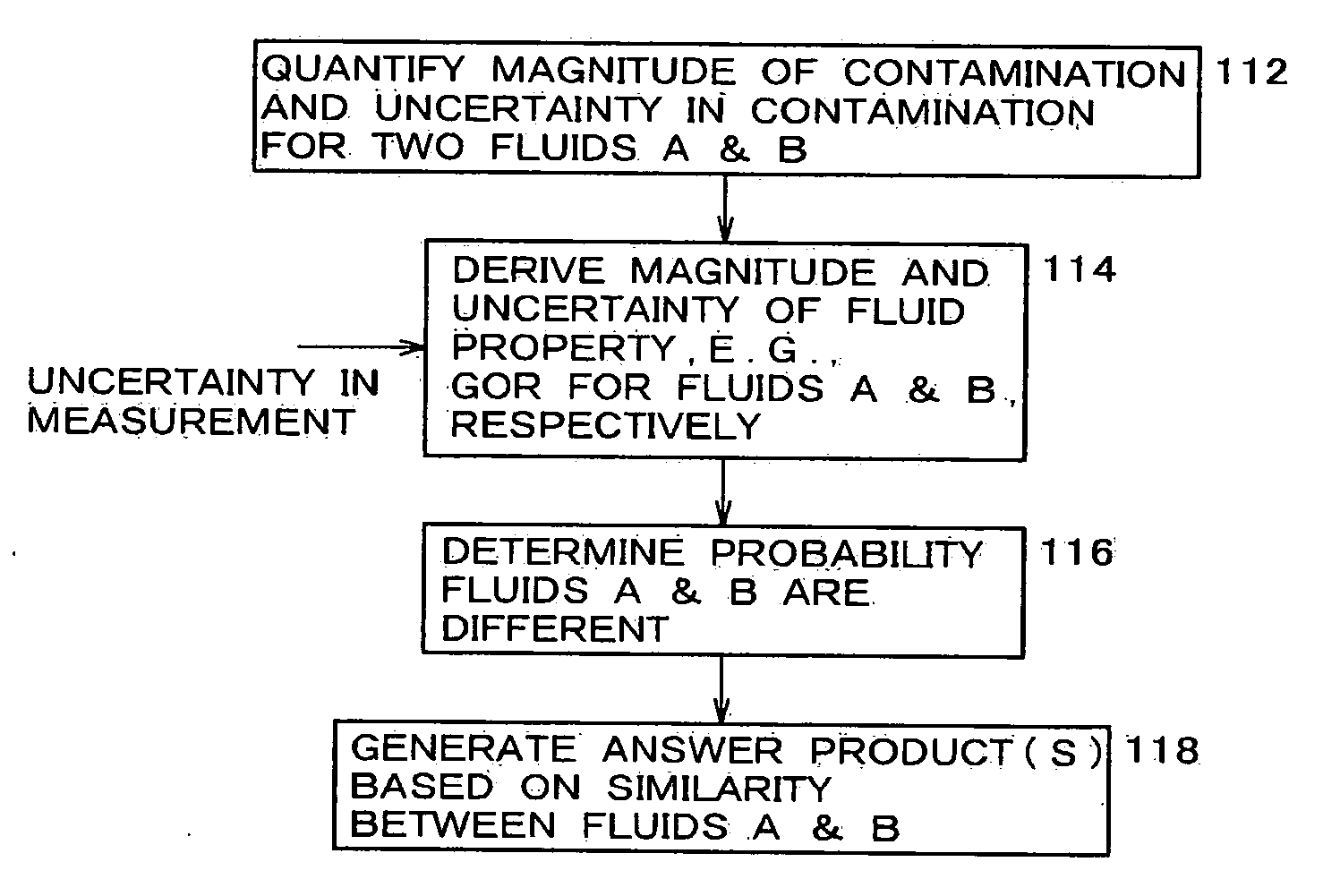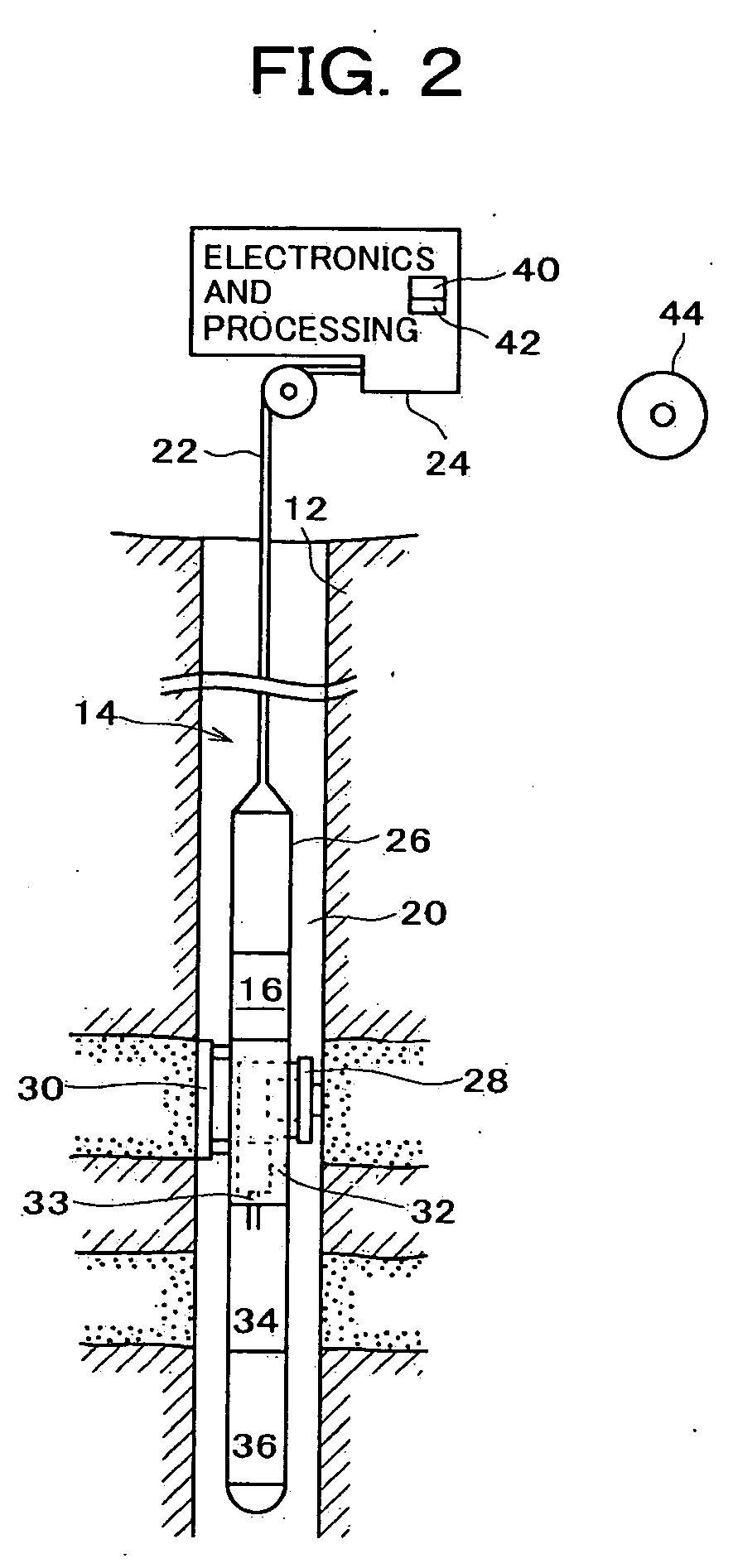System and methods of deriving fluid properties of downhole fluids and uncertainty thereof
a technology of fluid properties and fluid properties, applied in the field of formation fluid analysis, to achieve the effect of robust and accurate comparisons, reducing or eliminating systematic errors in measured data, and less sensitive to systematic errors in data
- Summary
- Abstract
- Description
- Claims
- Application Information
AI Technical Summary
Benefits of technology
Problems solved by technology
Method used
Image
Examples
simulation example 1
[0096] GOR and its associated uncertainty for the two fluids in Simulation A above are plotted as a function of contamination in FIG. 14(A). In this case, the two GOR are very different and the probability P2 that the two fluids are different is close to one.
simulation example 2
[0097] GOR and its associated uncertainty for the two fluids in Simulation B above are plotted as a function of contamination in FIG. 14(B). In this case, the two GOR are very similar and the probability P2 that the two fluids are different is close to zero.
Fluorescence and Its Uncertainty
[0098] Fluorescence spectroscopy is performed by measuring light emission in the green and red ranges of the spectrum after excitation with blue light. The measured fluorescence is related to the amount of polycyclic aromatic hydrocarbons (PAH) in the crude oil.
[0099] Quantitative interpretation of fluorescence measurements can be challenging. The measured signal is not necessarily linearly proportional to the concentration of PAH (there is no equivalent Beer-Lambert law). Furthermore, when the concentration of PAH is quite large, the quantum yield can be reduced by quenching. Thus, the signal often is a non-linear function of GOR. Although in an ideal situation only the formation fluid is expec...
example
[0130]FIG. 21 shows a field data set obtained from a spectroscopy module (LFA) placed downstream of the pumpout module. The check-valves in the pumpout module were closed as the tool was moved from station A to station B, thus trapping and moving fluid A in the flowline from one station to the other. The initial part of the data until t=25500 seconds corresponds to fluid A at station A. The second part of the data after time t=25500 seconds is from station B.
[0131] At station B, the leading edge of the data from time 25600-26100 seconds corresponds to fluid A and the rest of the data corresponds to fluid B. The different traces correspond to the data from different channels. The first two channels have a large OD and are saturated. The remaining channels provide information about color, composition, GOR and contamination of the fluids A and B.
[0132] Computations of difference in fluid properties and associated uncertainty include the following steps:
[0133] Step 1: The volumetric ...
PUM
 Login to View More
Login to View More Abstract
Description
Claims
Application Information
 Login to View More
Login to View More - R&D
- Intellectual Property
- Life Sciences
- Materials
- Tech Scout
- Unparalleled Data Quality
- Higher Quality Content
- 60% Fewer Hallucinations
Browse by: Latest US Patents, China's latest patents, Technical Efficacy Thesaurus, Application Domain, Technology Topic, Popular Technical Reports.
© 2025 PatSnap. All rights reserved.Legal|Privacy policy|Modern Slavery Act Transparency Statement|Sitemap|About US| Contact US: help@patsnap.com



